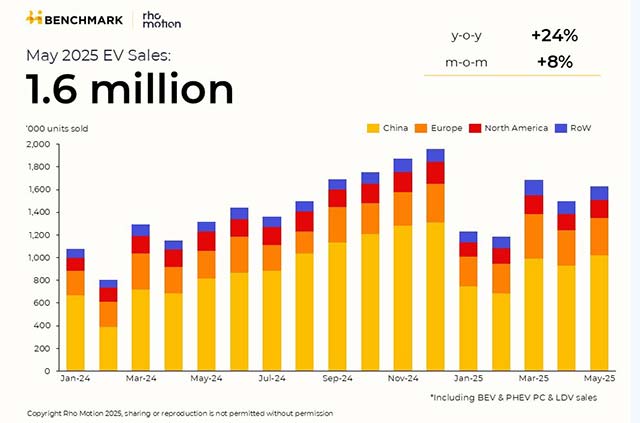Three key points about Vinhos Verdes
Last week's Vinhos Verdes Trade & Press Tasting in Westminster shed light on the diversity of wine styles coming from this part of northern Portugal.
The post Three key points about Vinhos Verdes appeared first on The Drinks Business.
Last week's Vinhos Verdes Trade & Press Tasting in Westminster shed light on the diversity of wine styles coming from this part of northern Portugal.
Unique selling point
Vinhos Verdes, established as a wine region in 1908, is an area which encompasses numerous microclimates and even more grape varieties, from Avesso to Padeiro.
Although UK consumers' relative unfamiliarity with these grapes compared to the likes of Sauvignon Blanc and Malbec may be seen as something of a disadvantage when it comes to marketing, the all-encompassing regional designation of 'Vinho Verde' is a term which wine drinkers do know. Indeed, the huge range of grapes grown in this part of Portugal is a not-so-secret weapon.
One of the giants of the region is Caves Campelo, which is currently present in more than 45 international markets, though not the UK.
"I joined the company recently and it's time to try again in a mature, competitive market – if you are successful in those markets, you have a big chance of being successful in others, and it's important to have that process for a large winery," revealed Paulo Nobre.
According to Nobre, Vinhos Verdes as a whole is a "unique selling proposition": "It's a region with unique domestic Portuguese grapes that you can't find elsewhere, you can find something similar, but it's a different style. The region has different layers, different styles, different price points."
One especially intriguing style concerns those wines made with lower alcohol levels.
Barcos Wines has a range of non-vintage DOC Vinho Verdes available in both bottle and can which clock in at an impressively low 9.5% ABV. Interestingly, a spokesperson for the brand shared that Barcos has been making these wines for around five years now, preceding the introduction of the UK's ABV-based duty system, meaning that they were not created as a means of cutting costs there, but rather to capitalise on growing interest in lower-alcohol drinks.
In fact, 10-11% ABV seems to be pretty standard across most Vinho Verde producers' portfolios, which, in light of the UK's much-maligned duty system, is a useful asset for keeping prices low.
Alvarinho and ageing
A masterclass titled Monção & Melgaço, where ambition and diversity meet presented by Dirceu Vianna Junior MW showcased the potential of Alvarinho (perhaps better known to UK consumers as 'Albariño') from the zone of Monção and Melgaço, within the Vinho Verde appellation.
“It is the home of Alvarinho in Portugal – when you think of Pinot Noir, you think of Burgundy, when you think of high quality Bordeaux blends you go to Pauillac, but I want to show that there are many facets of Alvarinho here," opened Junior.
More than 80% of the vineyard area of Monção and Melgaço is dedicated to this thick-skinned and small-bunched grape variety – indeed, this zone contains more than half (59%) of the Alvarinho within Vinhos Verdes.
“One of the things I enjoy about Alvarinho is its versatility – you pick early and you get fresh, fruity, linear, a bit later and you get grapefruit, later than that and you get peach and even some tropical fruit," said Junior. “The trend now is to use 400-500l barrels, in which it ages beautifully, it can even make really good sparkling wine.”
The ageing potential of this Alvarinho is certainly something wine fans ought to get excited about. Junior compared it to how "top Grüner Veltliner" matures, with savoury, nutty and saline characteristics developing.
One wine presented, 2016 Valados de Melgaço Alvarinho Grande Reserve 50 Aniversário, a limited edition of 1,910 bottles, was gently-pressed, spent 12 months in old oak and was then left on its fine lees in a steel tank for a further 24 months. The complexity of the wine in the glass, nine years after the fruit was harvested, was a powerful demonstration that Vinhos Verdes does not just produce light and easy-drinking wines, but also incredibly characterful wines that will stand the test of time.
Red alert
Although the stereotype of Vinho Verde is of a pale white wine with a slight petillance that adds to its refreshment, this was not always the signature style of the region – in fact, it was historically red wine.
Vinhão (also known as 'Sousão') is the fourth most-planted variety in Vinhos Verdes by area (around 1,840 hectares), making it the most-planted red grape in the region. Others further down the list include Castas Tintas, Espadeiro and, a variety doubtless familiar to Port drinkers, Touriga Nacional. As far as the breakdown goes, a slim majority (51%) of the red grape plantings in the region are of Vinhão.
Of course, the white wines are commercially dominant. According to 2024 data, some 70.9 million litres of white Vinho Verde were sold, as opposed to 6.8 million of rosé and just 1.4 million of red.
However, despite the relatively small numbers as far as red wine in Vinhos Verdes is concerned today, the quality is there. As the final wine in the Monção & Melgaço, where ambition and diversity meet masterclass, Junior selected the 2020 Quinta de Santiago SOU, made from 100% Alvarelhão.
“This is the Portuguese answer to Pinot Noir – red fruit, acidity, fine tannins,” he said.
Junior also added that while certainly not a budget bottle, it was another demonstration of the bang for one's buck that Portugal can offer wine drinkers: "€38 may seem a lot for a Portuguese red, but buy a top Pinot Noir from anywhere else in the world, and you’ll see how good value this is."



















































































































































